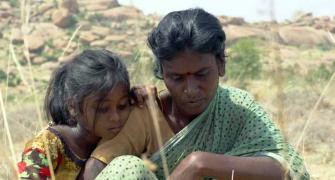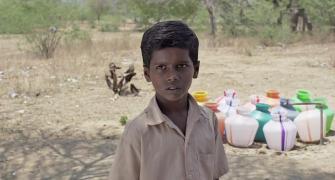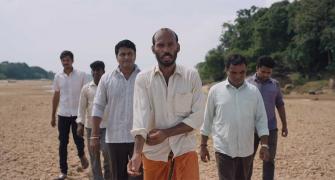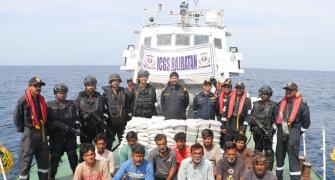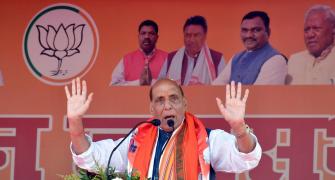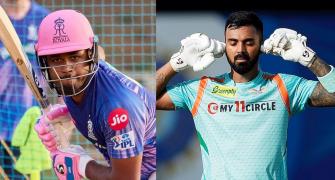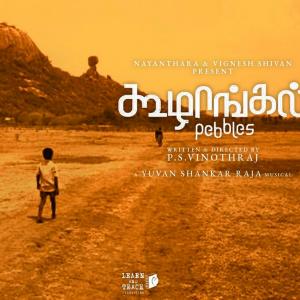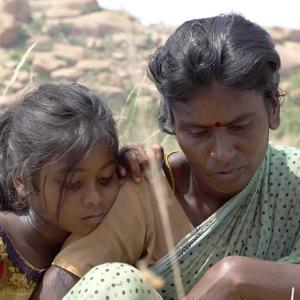'When I looked closely at people and stories from that region, I realised that the landscape contributes a lot to how people behave.'
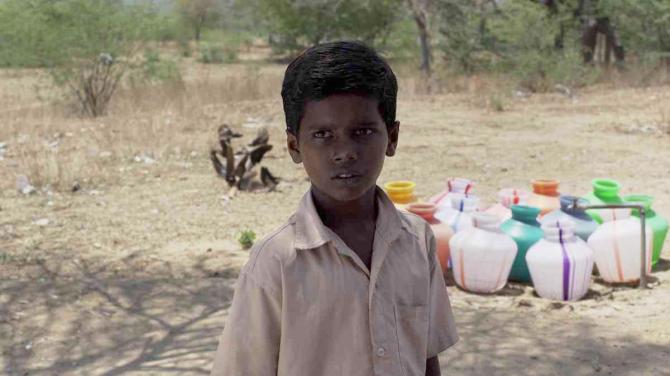
For a film that strips down abject poverty, sympathy is the last thing that one feels while watching Koozhangal.
Perhaps, this is because first-time director P S Vinodhraj managed to be that quintessential objective observer, watching life weave its warps and wefts without tainting them with his perceptions. Because he is objective, the audience could also watch the day unfold in the lives of a father and a son, played by newcomers Karuththadaiyaan and Chellapandi, and the people they come across, without having to judge them or the way they live.
"When placed within context of the blistering sun, the almost-a-desert landscape and the abject poverty, there is really no need to explain the exploding anger or the way 'victims' take it out on the 'weaker' women and children. It is just the way of life for those living there. It is not for me to say that is wrong or right. My intention is not to corner them but show where they come from so we can better understand them," explains Vinodhraj.
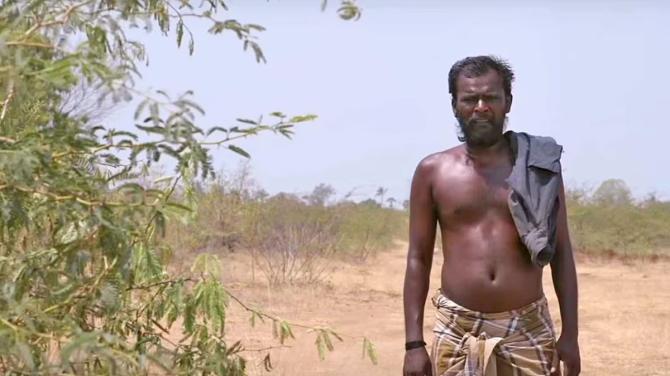
Koozhangal or Pebbles, which did not saw a theatrical release in the country and Vinodhraj shot into prominence when India chose the film as its 2022 Oscar entry over favourites like Gujarati film Chhello Show and Shoojit Sircar's Sardar Udham Singh.
Although he tried for a limited release, Vinodhraj says it was not possible to showcase the film in theatres because of its length only 75 minutes and because it didn't have a pre-and-post-interval format.
So the film, which remained a festival circuit favourite, winning many prestigious awards since 2021, was finally made available for streaming on SonyLIV from October 27.
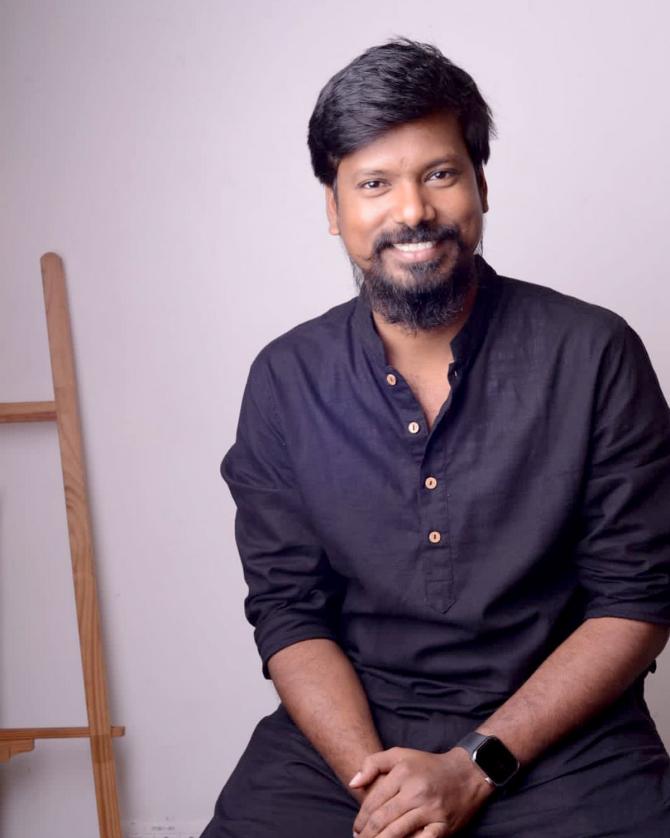
Vinodhraj's story is remarkable too.
He is from a small town near Madurai. He says when he was in Class 4, he had to drop out of school because his father had passed away. To support his family, he became a daily wager, earning about Rs 50 a day. He says his life could have been just that.
"My mother would have been ecstatic even if I had gotten a job selling clothes in a shop. That would have been an achievement for us," says Vinodhraj.
But things changed when a film crew camped near his workplace for shooting. Enchanted by that world, he started dropping in on them when he could find time. By the time the shooting ended, he knew he wanted to make films.
That clarity shaped his life from then on, he says. He knew his destination was Chennai and to get there he needed more education, so he pushed himself to complete his Class 10 privately. When Chennai finally happened, he knew it would serve his goal better if he got himself a job at a DVD shop.
Each step he took, he says, took him a little closer to what he wanted to do finally.
For instance, the thing that stands out the most about Koozhangal is its visual language. Even a passing shot tells a story: when a woman carrying the water pots hails a bus, the audience get to know that in that particular arid corner of India, women still have to go far to fetch water for their family. Only, thanks to the 'development', they don't have to walk miles anymore, buses cut the distance considerably. They learn this without a word spoken as dialogue.
Vinodhraj says he arrived at his craft telling stories visually because he pushed himself to get a job at the DVD shop.
"I had access to brilliant films and I devoured them. But since I didn't understand English, I started watching films visually. So it is only natural that I would think visually too," says Vinodhraj.
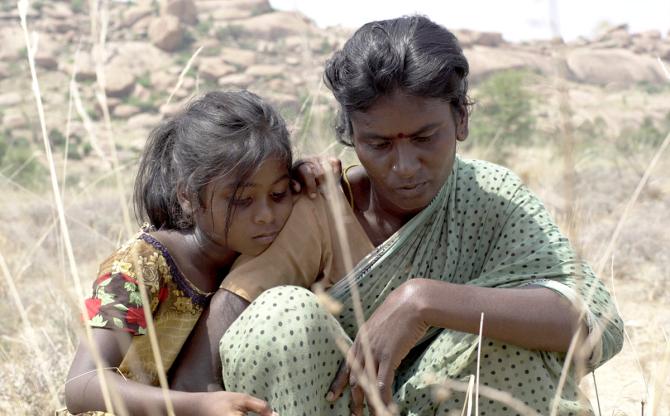
When he finally could make a film, Vinodhraj says he wanted to tell the story of domestic violence, mainly because of his sister who was abused.
Vinodhraj says he already had the basic plotline: Fed up with the abuse, the mother leaves for her brother's house. The father forces his son to go with him to fetch her back. When they reach the brother's house, they learn that the mother had already gone back to their house and so the duo return home too.
"Obviously, revenge was my underlying emotion. In Koozhangal, the son takes revenge on his father by forcing him to walk back to his village. He tears and throws away the bus fare money. He does that because he realises his mother is probably walking that distance every time she leaves in a huff after a fight. His epiphany comes when he sees a woman walking with her baby in the distant horizon as he and his father wait for the bus," says Vinodhraj.
But when Vinodhraj went to the locale that would play out his plotline, Koozhangal became a lot more than his personal angst, he adds.
"When I looked closely at people and stories from that region, I realised that the landscape contributes a lot to how people behave," says Vinodhraj.
So in Koozhangal, the landscape becomes a protagonist too. The camera zooms out to focus on the surroundings as much as people, giving the audience a wider frame of understanding.
Vinodhraj says he knew Koozhangal could only be a 'festival film' but his next -- titled Kottukkaali -- will be in theatres.
Kottukkaali refers to an adamant girl in the local lingo, and is set around Madurai. It revolves around 13 people.


